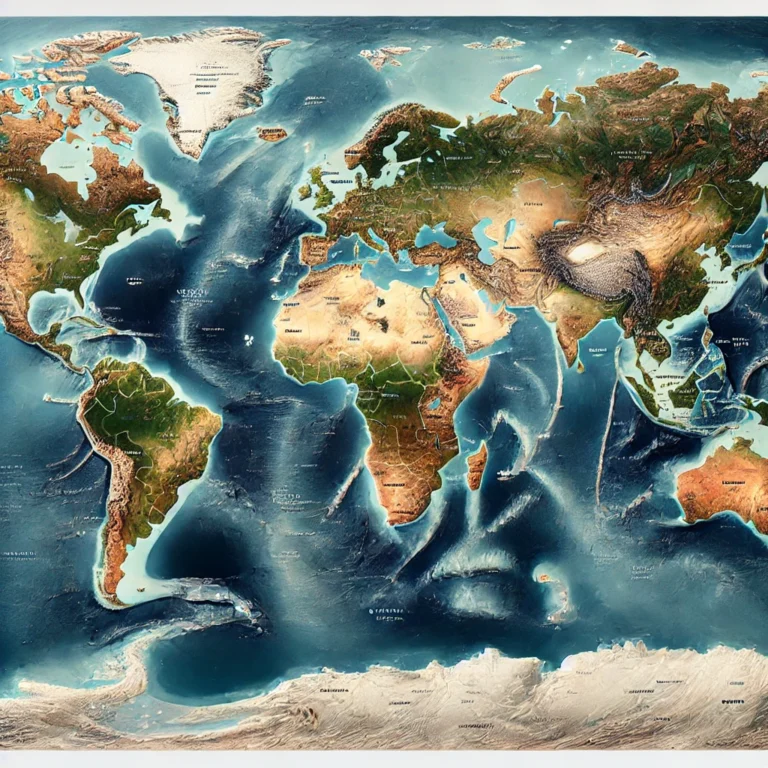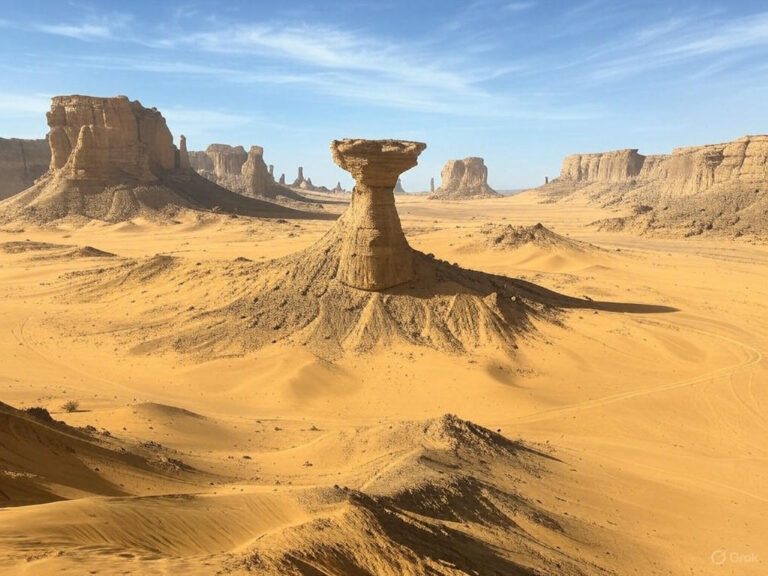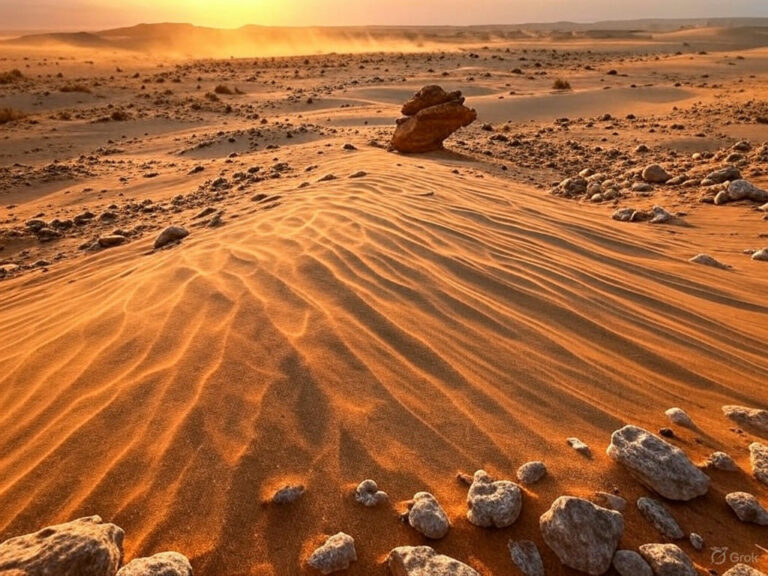The Great Rift Valley
Imagine Earth’s surface as a vast cracked eggshell. Where these cracks pull apart, new worlds are born. The Great Rift Valley is one such monumental crack — a geological fault system stretching ~6,400 km from northern Syria (Asia) to central Mozambique (Africa).
🌐 Definition:
The Great Rift Valley is an active continental rift zone — a place where tectonic plates are diverging, slowly tearing a landmass into fragments. Over geological time, this could split the African continent and form a new ocean.
🧭 Geographical Span & Major Divisions
| Segment | Location & Features |
|---|---|
| Jordan Rift Valley | Starts in Syria, includes the Jordan River, Dead Sea, and Gulf of Aqaba. This is the northernmost stretch. |
| Red Sea Rift | Tectonic divergence created the Red Sea, separating Africa from Arabia. Connected to the Gulf of Aden in the southeast. |
| East African Rift Valley (EAR) | The main rift in Africa, extending from Ethiopia to Mozambique. It’s the site of major volcanism, lake formation, and earthquakes. |
🧩 East African Rift Valley (EAR) – Africa’s Tectonic Wound

📍 Origin Point:
- Begins at the Afar Triple Junction — a rare tectonic “Y-junction” where three plates meet:
- Arabian Plate
- Nubian Plate (part of the African Plate)
- Somali Plate (splitting away from Africa)
📍 Extent:
- Runs southwestward from the Red Sea, splitting the Ethiopian Highlands, and continues through:
🇪🇹 Ethiopia 🇰🇪 Kenya 🇺🇬 Uganda 🇷🇼 Rwanda 🇧🇮 Burundi 🇿🇲 Zambia 🇹🇿 Tanzania 🇲🇼 Malawi 🇲🇿 Mozambique
🔀 Bifurcation: Two Branches of EAR
🔹 Eastern Rift / Gregory Rift
| Feature | Details |
|---|---|
| 📍 Location | From Red Sea to Mount Kilimanjaro |
| 🌋 Volcanism | High — includes Mount Kilimanjaro (dormant), Mount Kenya (extinct) |
| 🌐 Key Site | Afar Triple Junction |
| 🌊 Geological Prediction | The Somali Plate may break away from Africa, and the valley may flood to become a new sea/ocean — similar to how the Red Sea formed. |
🔹 Western Rift / Albertine Rift
| Feature | Details |
|---|---|
| 🌍 Location | Along the western border of Uganda, Rwanda, Burundi, DRC |
| 🌊 Famous Lakes | Deep, tectonic lakes like Lake Tanganyika, Lake Malawi, Lake Edward, Lake Albert, Lake Kivu |
| 🌿 Ecology | Extremely biodiverse – forests, alpine zones, lakes, and wetlands |
| ⛰️ Landscape | Includes snow-capped peaks and highland forests |
🌋 Volcanism & Seismicity in EAR
🌋 Volcanoes
- Mount Kilimanjaro (dormant stratovolcano)
- Mount Kenya (extinct stratovolcano)
- Ol Doinyo Lengai (active volcano in Tanzania – unique natrocarbonatite lava)
| 🌍 Seismic Activity |
- The EAR is the most seismically active rift system on land
- Most earthquakes occur in the Afar Depression and along active faults
⚠️ Many regions in the rift are geologically young — hence, earthquakes and volcanic activity are frequent and intense
🔬 Geological Significance
African Plate is splitting into:
- Nubian Plate (western side)
- Somali Plate (eastern side)
The two move apart 6–7 mm/year
| ⛏️ Volcanic Evidence | EAR floor is covered with flood basalts — signs of intense volcanic eruptions in the past
| 🌊 Future Geography | If rifting continues, eastern Africa may split off forming a new island continent, separated by an ocean basin (like Madagascar’s history)
🧠 Mnemonics & Visual Analogies
- “EAR Splitting” – The East African Rift is literally splitting the “Ear” of Africa (Horn) off the rest of the head (continent).
- Afar Triple Junction = Y-junction of breakup
- Gregory Rift = Eastern Rift = Volcano Valley
- Albertine Rift = Western Rift = Lake Valley
🔚 Conclusion
The Great Rift Valley is more than a depression in the Earth’s crust — it is a living laboratory of geology. It shows us how continents break, how new oceans form, and how tectonic energy shapes life and land.





3 Comments